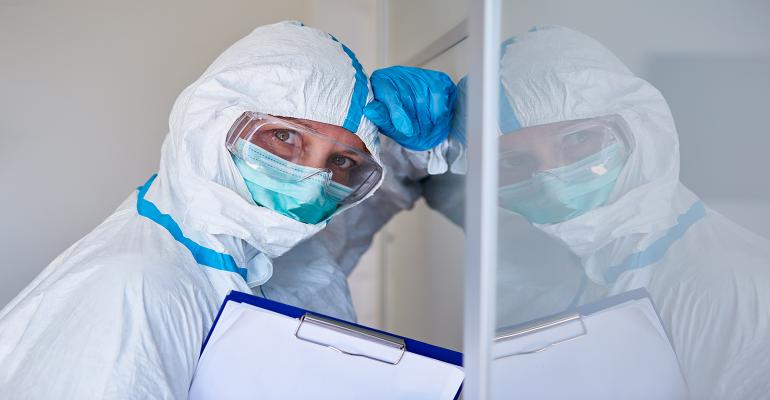2020’s goal was to survive!
If anyone had told you two years before that the biggest struggle of healthcare improvement would be to survive despite having world-class healthcare institutes, would you have believed this argument?
Before March 2020, our systems had a different list of priorities ranging from what were the most recent trends to improving healthcare, creating a sustained improvement culture and managing various improvement projects in every healthcare facility, which included acronyms such as PDCA, SIPOC, six sigma, lean, value stream mapping or similar. These were shining or shrinking based on organisational development but never just aiming to survive in very few C-suite meetings if any.
The pandemic was a new chapter for preventive healthcare
In March 2020, the WHO announced COVID-19 as a pandemic, and while people were advised to stay home, the white army had to protect their communities and themselves, putting aside all regular business strategies and putting patients as the top priority as usual.
While people were concerned about washing their hands, healthcare had to face washed out regular key performance measures, so the blue ocean strategy was the most cited by CEOs to go through the wave safely.
The paradox of (no time to improve) while improving
When improvement professionals tried to step in the process, as usual, they found a higher wave of no time to improve. We used to see, hear, face this attitude daily but it was never that preeminent. As a surveyor, it was for the first time to hear from hospitals that they hardly had few projects for one year, and the answer was we were in a pandemic.
The paradox here is that organisations were already implanting improvement techniques successfully; below is a look at some examples.
1. Visual management and visual cues
Thousands of posters everywhere nudging visitors and caregivers to wash their hands, the sign on the floor to stay here and keep distance, the yellow sign in the elevator to indicate the number of passengers allowed, the new coloured line on the floor for respiratory patient’s pathway, the exact marks on the floor for chairs to ensure safe social distancing, all are examples from lean management, especially the visual management.
2. Colour coding
This was frequently used in different formats; the app that most probably you use daily to categorise people according to infection and recent vaccination usually uses colour codes such as green, yellow, or red to categorise users.
3. Poka-Yoke
A Japanese term for error prevention includes removing chairs from waiting areas, and bright straps to block visitors from using those chairs.
Burnout, a new constant in the healthcare giver buy-in formula
The most important point thing to acknowledge is that the individual factor was different this time; regardless of your effort to focus on process improvement, it can barely beat the internal factor (burnout), cited as the mind pandemic.
In the following part, I will summarise for you my article (cooling the Burnout; how did the pandemic change healthcare workers’ safety priorities?) published by Saudi Patient Safety Center Newsletter, Oct 2020.
What is Burnout, “a combination of exhaustion, cynicism, and perceived inefficacy resulting from long-term job stress,” is long known as a side effect of a healthcare work environment that can reduce work performance and increase the risk of error.
Increase in burnout levels during the COVID-19 era
Let us check the literature about Burnout; in Wuhan, 60 per cent of 2014 nurses faced emotional exhaustion, 91 per cent had a high level of anxiety. In Italy, 50 per cent out of 1379 front liners had symptoms of post-traumatic stress, 25 per cent had symptoms of depression, and 20 per cent had symptoms of anxiety. In addition, 10 per cent reported insomnia, and 22 per cent reported elevated levels of perceived stress. Thus, healthcare workers’ mental safety started to be called the pandemic infecting the mind or a parallel pandemic.
Cooling the Burnout, improvement of the caregiver before the process
On a national level, it is important to provide funding for those experiencing mental health effects. The second is to integrate well-being programmes, COVID command centres and reporting mechanisms at the organisation level.
The Institute for Healthcare Improvement provided a stepwise approach to promote mental health and well-being “The Psychological PPE” with clear advice to individuals and team leaders. Individuals can start with a day off to maintain the right to Work-Life Balance, avoid excessive COVID news, receive mental health support, and reframe negative experiences. The team leaders can play a significant role by placing limits on shift time as appropriate, clear delineation of responsibilities, train leaders on how to monitor signs of stress, and provide peer support to the team.
Final thoughts
Improvement was there in the background of healthcare processes, trying, as usual, to reduce waste and deliver easier and better services; however, while the COVID-19 waves took all the world’s priorities, healthcare improvement shall take this as timeout for creating more engaging, flexible plans. These plans will have no time to improve because it should be part of the daily business and shall have new dimensions to consider. Burnout may see surge after surge especially that after 15 months there are still waves taking place in different parts of the world.
Unless burnout is made as one of healthcare improvement’s top priorities, you will keep hearing that there is no time to improve. Supporting the well-being programmes will be a critical milestone for businesses, individuals and patients.
References available on request

Dr. Elsheikh is involved with the following projects:
- Quality and Patient Safety director – Acting Director of Organizational Excellence and Development Security Forces Hospital Makkah (SFHM), Saudi Arabia
- Leadership, ESR and Visit team leader Surveyor – Saudi Central Board of Accreditation of Healthcare Institutions (CBAHI)
- Hospital Program Surveyor – General Authority for Healthcare Accreditation and Regulation (GAHAR) Egypt.
This article appears in the latest issue of Omnia Health Magazine. Read the full issue online today.

